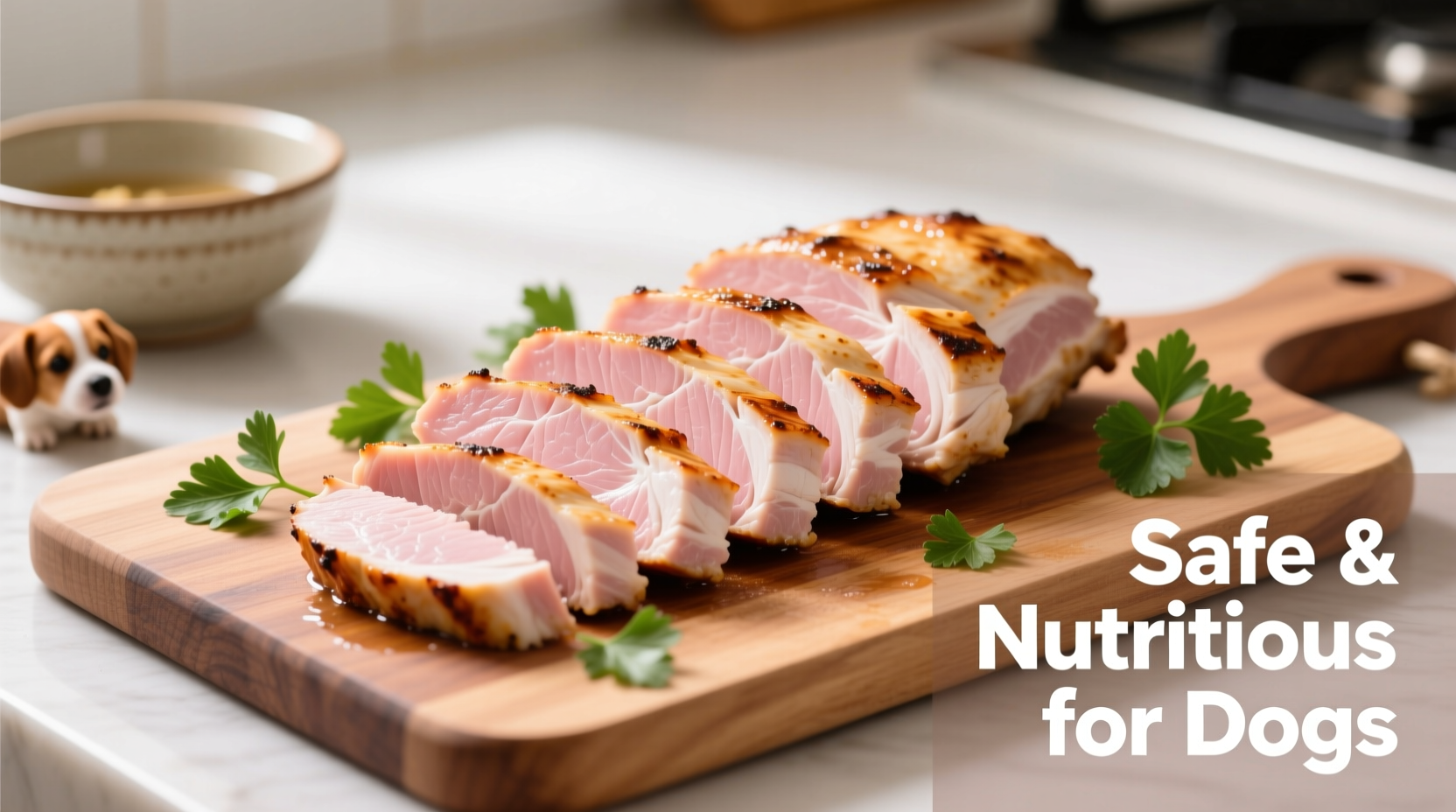When searching for how to cook chicken for dogs, you need clear, vet-approved guidance that prioritizes your pet's safety. Many well-meaning owners unknowingly put their dogs at risk by using improper cooking methods or adding dangerous ingredients. This guide provides step-by-step instructions based on veterinary nutrition standards, ensuring you prepare chicken that's both safe and beneficial for your canine companion.
Why Proper Chicken Preparation Matters for Dogs
While chicken seems like a simple protein source, improper preparation can lead to serious health issues for dogs. According to the ASPCA Animal Poison Control Center, onions and garlic—common seasonings in human chicken dishes—can cause hemolytic anemia in dogs, destroying red blood cells. Additionally, the FDA warns that cooked bones become brittle and can splinter, causing choking hazards or internal injuries.
| Safe Preparation | Unsafe Practices | Health Risk |
|---|---|---|
| Boneless, skinless breast | Cooked bones included | Choking, intestinal perforation |
| No seasoning added | Onions, garlic, spices | Anemia, gastrointestinal distress |
| Cooked to 165°F (74°C) | Undercooked or raw | Salmonella, campylobacter infection |
| Cooled before serving | Hot chicken served immediately | Mouth and esophageal burns |
The Step-by-Step Cooking Process
Follow these precise steps to prepare chicken that's both safe and digestible for your dog. This method aligns with recommendations from board-certified veterinary nutritionists at the American College of Veterinary Nutrition.
1. Selecting the Right Cut
Choose boneless, skinless chicken breast for the leanest, most digestible option. Skin contains excessive fat that can trigger pancreatitis in dogs, while bones pose significant hazards. The USDA Food Safety and Inspection Service confirms that chicken breast contains approximately 30g of protein per 100g, making it an excellent protein source when prepared correctly.
2. Proper Preparation Technique
Rinse the chicken under cool water and trim any visible fat. Contrary to common practice with human food, do not rinse chicken intended for dogs excessively, as this can spread bacteria. Pat dry with paper towels, then place in a cooking vessel. Never add oil, butter, or any seasoning—even "healthy" seasonings like garlic powder remain toxic to dogs.
3. Cooking to the Perfect Temperature
Boiling remains the safest cooking method for canine consumption:
- Place chicken in a pot and cover with cold water
- Bring to a gentle boil (avoid vigorous boiling which toughens meat)
- Reduce heat and simmer for 12-15 minutes
- Verify internal temperature reaches 165°F (74°C) using a meat thermometer
- Remove from heat and drain completely
The USDA Food Safety and Inspection Service emphasizes that 165°F is the minimum safe temperature to eliminate harmful bacteria like salmonella and campylobacter, which dogs can contract from undercooked poultry.

4. Cooling and Storage Guidelines
Allow chicken to cool completely at room temperature before serving—typically 30-45 minutes. Store leftovers in an airtight container in the refrigerator for up to 3 days or freeze for up to 3 months. The American Veterinary Medical Association recommends labeling frozen portions with preparation dates to ensure freshness.
Serving Guidelines: Portions and Frequency
Chicken should supplement, not replace, your dog's regular balanced diet. The appropriate portion depends on your dog's size and nutritional needs:
- Small dogs (under 20 lbs): 1-2 tablespoons per meal
- Medium dogs (20-50 lbs): 2-4 tablespoons per meal
- Large dogs (50+ lbs): 1/4 to 1/2 cup per meal
Limit chicken to no more than 10-15% of your dog's daily caloric intake. The World Small Animal Veterinary Association notes that while protein is essential, excessive amounts can strain kidneys, particularly in senior dogs or those with pre-existing conditions.
When to Consult Your Veterinarian
Before introducing cooked chicken or making any diet changes, consult your veterinarian, especially if your dog has:
- Pre-existing kidney or liver conditions
- History of pancreatitis
- Food sensitivities or allergies
- Being prescribed a therapeutic diet
Veterinary nutritionists emphasize that chicken alone lacks essential nutrients dogs require, including calcium, certain vitamins, and fatty acids. The Cummings School of Veterinary Medicine at Tufts University warns that prolonged exclusive chicken diets can lead to nutritional deficiencies.
Common Mistakes to Avoid
Based on analysis of common errors reported to the ASPCA Animal Poison Control Center, avoid these critical mistakes:
- Using seasoned leftovers - Even small amounts of onion or garlic powder can accumulate to toxic levels
- Serving hot chicken - Can cause painful mouth burns
- Adding bones for "natural" chewing - Cooked bones splinter easily causing internal injuries
- Overfeeding chicken - Can lead to unbalanced nutrition and weight gain
Remember that individual dogs have unique dietary needs. What works for one dog might not suit another, particularly those with specific health conditions or breed predispositions.
Can dogs eat boiled chicken every day?
No, dogs should not eat boiled chicken every day as their sole protein source. While safe in moderation, chicken lacks complete canine nutrition. The American College of Veterinary Nutrition recommends limiting chicken to 10-15% of your dog's daily calories and consulting your veterinarian before making dietary changes.
How long should I boil chicken for my dog?
Boil boneless, skinless chicken breast for 12-15 minutes until it reaches an internal temperature of 165°F (74°C). Use a meat thermometer to verify doneness, as visual cues alone aren't reliable. This ensures harmful bacteria are eliminated while maintaining tenderness.
Is chicken breast or thigh better for dogs?
Chicken breast is generally better for dogs due to its lower fat content compared to thighs. The higher fat content in thighs can trigger pancreatitis in susceptible dogs. Boneless, skinless breast provides lean protein with minimal digestive risk when properly cooked.
Can I add vegetables to my dog's cooked chicken?
Yes, you can add dog-safe vegetables like carrots, green beans, or pumpkin to cooked chicken, but introduce one new ingredient at a time. Avoid onions, garlic, leeks, and chives which are toxic. The FDA recommends cooking vegetables until soft for better digestibility, especially for small dogs.











 浙公网安备
33010002000092号
浙公网安备
33010002000092号 浙B2-20120091-4
浙B2-20120091-4